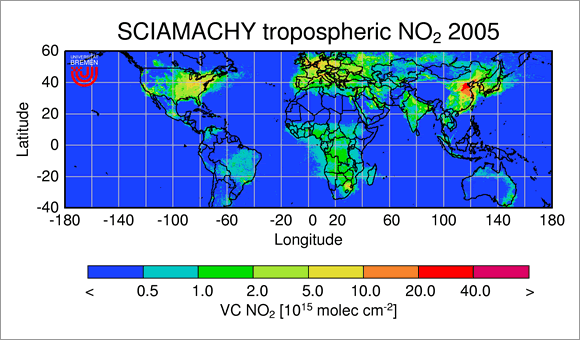In the troposphere, the lifetime of NO2 is of the order of several hours, and therefore most of the NO2 is found close to the emission sources. As a result, the distribution of NO2 in the troposphere is very inhomogeneous: there are large maxima over polluted areas and very low values in remote regions.

Fig 3.4.2.2.1: Worldwide tropospheric NO2 distribution as seen by SCIAMACHY.
Image: AT2-ELS
The seasonality of NO2 in the troposphere depends on the source type and the lifetime of NO2. Most anthropogenic emissions are relatively constant, while biomass burning and soil emissions often peak at a particular season.
The lifetime of NO2 is in a first approximation determined by loss through reaction with OH, which has larger concentrations at higher levels of insolation. Therefore, at constant emissions, tropospheric NO2 is at a maximum in winter and a minimum in summer, when more OH is present to react with it.